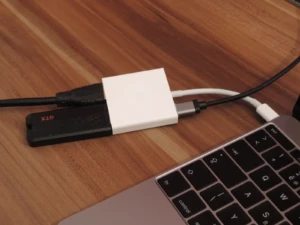Table of Contents
- Why this SIM card holder
- Key features of the SIM card holder
- Technical specifications
- Pin assignment (C1–C8)
- Materials & plating
- Recommended PCB notes
- Applications
- Compliance & quality
- Order & RFQ
- FAQs
Why this SIM card holder
A reliable SIM card holder protects connectivity and reduces field failures in compact devices. The DW-SM-62802 series is a top-mount SMT SIM card holder with a push-pull mechanism and a clear LOCK/OPEN slider for secure retention in vibration. Its low 2.8 mm profile saves Z-height and enables slim enclosures for trackers, meters, POS terminals and handheld gateways. The guided entrance reduces mis-insertion, and tape-and-reel packaging supports fast, automated assembly.
Key features of the SIM card holder
- Push-pull with slider lock to prevent accidental card movement under shock and vibration.
- Low 2.8 mm profile for dense boards and compact housings.
- ≥5,000 cycles durability for long service life in the field.
- −40 °C to +85 °C operating range for industrial environments.
- 8-pin SIM card holder footprint on 0.80 mm pad pitch for easy routing to baseband modems.
- Multiple gold options (Flash / 3 / 5 / 15 / 30 µin) to balance cost versus wear and corrosion.
- SMT + tape-and-reel for high-speed pick-and-place and consistent reflow results.
Technical specifications
- Type: Top-mount SMT SIM card holder (push-pull).
- Profile height: 2.80 mm (typ.).
- Body size: ~26.30 mm L × 17.80 mm W; card window 15.20 mm.
- Electrical ratings: 15 V DC, 1.0 A; contact resistance ≤ 50 mΩ; insulation ≥ 1000 MΩ; dielectric withstand 500 V AC / 1 min.
- Mechanical: contact normal force 0.3–0.9 N; durability ≥ 5,000 cycles; salt spray 24 h.
- Operating temperature: −40 °C to +85 °C.
- Compliance: RoHS, REACH SVHC, Low-Halogen.
- Packaging: Tape-and-reel (MPQ ~800 pcs/reel).
- Series / SKU: DW-SM-62802-XXTR-01 (XX = plating code; TR = tape-and-reel).
Pin assignment (C1–C8)
C1 = VCC, C2 = RST, C3 = CLK, C4 = N/A, C5 = GND, C6 = VPP, C7 = I/O, C8 = N/A.
This SIM card holder follows the standard SIM interface so it pairs cleanly with cellular modules from major vendors.
Materials & plating
- Housing/Shell: LCP, UL 94V-0, black for heat resistance and dimensional stability.
- Contacts: Copper alloy with gold on the mating area and tin on the solder area for low resistance and solid joints.
- Plating codes (XX): 01 = Gold Flash; 03 = 3 µin; 05 = 5 µin; 15 = 15 µin; 30 = 30 µin (mating area).
Recommended PCB notes
Use the recommended footprint with 0.80 mm pad pitch and a keep-out path for the LOCK/OPEN slider. Keep SIM traces short and well-referenced to ground per modem vendor guidelines. Follow an LCP-safe reflow profile and verify pick-and-place nozzle compatibility for this SIM card holder.
Applications
- Cellular/NB-IoT/LTE-M trackers, telematics and asset tags
- Smart meters, data loggers and industrial controllers
- POS/handheld terminals, ticketing and access systems
- Gateways, routers and security panels using a removable SIM
Compliance & quality
This SIM card holder meets EU RoHS, REACH SVHC and Low-Halogen requirements. Dragon Well operates ISO9001 / ISO14001 / IATF16949 systems with traceability from NPI to mass production to ensure consistent contact resistance, coplanarity and cycle life.
Order & RFQ
Request samples or a fast RFQ for the SIM card holder here:
- Dragon Well HQ:http://www.cndragonwell.com/
- DW-TEK site: https://dw-tek.com
Connect with us
- LinkedIn: Dragon Well Electronics Co., Ltd
- Instagram: @dragonwell_electronics
- Facebook: Dragon Well Electronics
FAQs
Q1. Is this SIM card holder self-ejecting?
No. It is a push-pull SIM card holder with a slider lock, preferred when stability under vibration is important.
Q2. Which gold thickness should I pick?
Choose 15–30 µin for high cycle life or harsh/corrosive environments; 3–5 µin is cost-effective for low-cycle consumer products.
Q3. Does the SIM card holder support 1.8 V and 3 V SIMs?
Yes. The connector supports standard SIM interfaces within 15 V / 1 A ratings; voltage selection is managed by the baseband.








